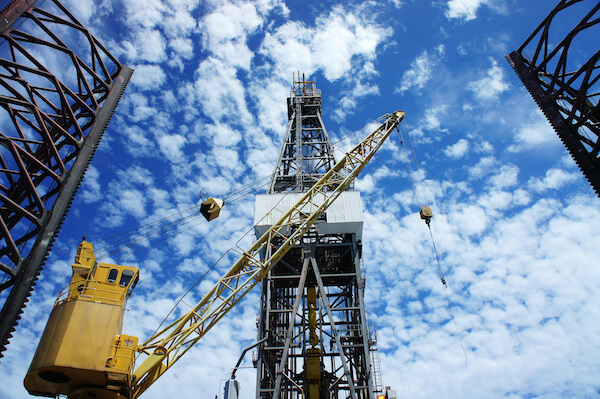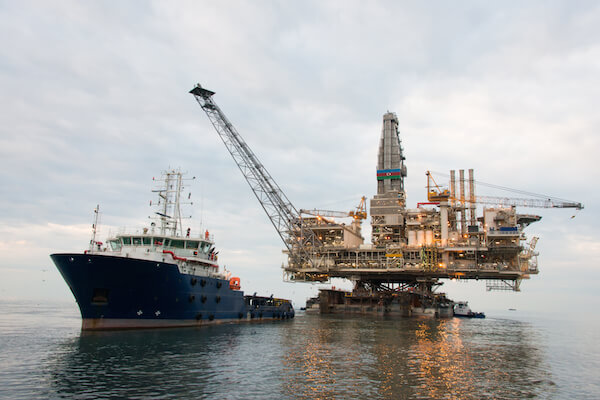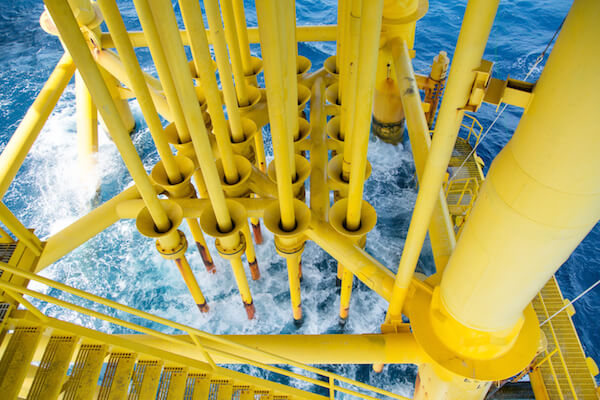Tag Archive for: oil
Guidelines for Drilling Wells for the Exploration and Production of Hydrocarbons in Mexico
/NewsThe National Hydrocarbons Commission (“CNH”) submitted a draft of the Guidelines for Drilling Wells for Exploration and Production of Hydrocarbons (“Lineamientos de Perforación de Pozos para las Actividades de Exploración y Extracción”; the “Guidelines”) to the Federal Commission for Regulatory Improvement (“COFEMER”).
The Guidelines regulate well permitting, design, construction, integrity, maintenance, and abandonment standards and requirements for all oil, gas, and injection wells in Mexico, whether on-shore or off-shore, conventional or non-conventional, and which apply to both private industry and state productive companies. They regulate best oil field practices and standards for various activities; provide for inspection, audit, and enforcement; and, include provisions on operator and non-operator liability. Operators and non-operators are liable for all damages related to their activities (well drilling, design, construction, completion, and abandonment, etc.), regardless of whether their underlying exploration contracts with CNH or “entitlements” are in effect.
The Guidelines include the following attachments:
-
Glossary of defined terms.
-
Regulatory requirements on best practices for the design, construction, termination, integrity, maintenance, and abandonment of wells. These requirements are considered to be hierarchically one step below official Mexican standards (NOMs), which means that the latter have control over CNH’s referenced regulatory requirements.
-
Guidelines for registering oil and gas wells and reservoirs/fields.
-
Guidelines for well-permitting applications.
-
Guidelines for ensuring well integrity (e.g., casing and cementing requirements and standards).
-
Format to request administrative registration of wells.
-
Format to apply for drilling and completion well permits.
-
Format for applications to modify previously granted well permits.
Copyright: Haynes boone
Raymond James: Get Ready for $80 Oil
/NewsRebounding after a two-year collapse, it’s only this month that oil prices have pushed up past $50 a barrel, but Raymond James & Associates says this is just the beginning for higher prices.
In a note to clients, analysts led by J. Marshall Adkins say West Texas Intermediate will average $80 per barrel by the end of next year — that’s higher than all but one of the 31 analysts surveyed by Bloomberg.
“Over the past few months, we’ve gained even more confidence that tightening global oil supply/demand dynamics will support a much higher level of oil prices in 2017,” the team says. “We continue to believe that 2017 WTI oil prices will average about $30/barrel higher than current futures strip prices would indicate.”
The team went on to lay out three reasons for their bullish call, all of which are tied to global supply — the primary factor that precipitated crude’s massive decline.
Here’s how the rebalancing of the global oil market will be expedited from the supply side, according to the analysts:
First, the analysts see production outside the U.S. being curbed by more than they had previously anticipated, which constitutes 400,000 fewer barrels of oil per day being produced in 2017 relative to their January estimate. In particular, they cite organic declines in China, Columbia, Angola, and Mexico as prompting this downward revision.
“When oil drilling activity collapses, oil supply goes down too!,” writes Raymond James. “Amazing, huh?”
Adkins and his fellow analysts also note that the unusually large slew of unplanned supply outages will, in some cases, persist throughout 2017, taking a further 300,000 barrels per day out of global supply.
Finally, U.S. shale producers won’t be able to get their DUCs in a row to respond to higher prices by ramping up output, the team reasons, citing bottlenecks that include a limited available pool of labor and equipment.
Combine this supply curtailment with firmer than expected global demand tied to gasoline consumption, and Adkins has a recipe for $80 crude in relatively short order.
“These newer oil supply/demand estimates are meaningfully more bullish than at the beginning of the year,” he writes. “Our previous price forecast was considerably more bullish than current Street consensus, and our new forecast is even more so.”
The only analyst with a higher price forecast for 2017, among those surveyed by Bloomberg, is Incrementum AG Partner Ronald Stoeferle. He sees West Texas Intermediate at $82 per barrel next year. The consensus estimate is for this grade of crude to average $54 per barrel in 2017.
Over the long haul, however, Raymond James’ team sees WTI prices moderating to about $70 per barrel.
Copyright: Rig Zone
Mexico’s Pemex Approves Trion Field as First Farm Out
/NewsMexican state oil company Pemex has picked the deep-water Trion field near the U.S. border as the first one it will farm out to other operators to help it develop untapped resources, the firm said on Friday.
The search for private capital to boost areas previously discovered by Pemex is a major step in the opening up of Mexico’s oil and gas industry, a process enabled by an energy reform that ended the company’s monopoly in 2013.
Pemex Chief Executive Jose Antonio Gonzalez Anaya told a news conference the company’s board had approved the step and that Trion would likely be operated by a company other than Pemex.
“It’s a big, important field,” Gonzalez said.
The Trion field, located in the Perdido area, will require about $11 billion worth of investment and more farm outs will follow, Gonzalez said. In total, the Trion field contained some 480 million barrels, he added.
Pemex did not have a specific number of investors in mind for the Trion field, he said. The companies involved in the farm out should be announced in December, when Mexico has scheduled its first auctions for deep water fields.
Speaking at the same news conference, Energy Minister Pedro Joaquin Coldwell said the Trion farm out would be in the form of a license and that the field was 2,500 meters (8,202 feet) deep.
Two years of falling crude prices have hurt Pemex, which wants partners to boost output and improve margins.
In the first quarter of this year, Pemex ran up its 14th consecutive quarterly loss at about 62 billion pesos ($3.6 billion), as both crude prices and output fell.
Earlier, Pemex announced that Luis Rafael Montanaro Sanchez had been named as the new director of Pemex’s ethylene unit.
Source: Rig Zone
Success through more efficient use of technology – DEA at EAGE 2016 in Vienna
/NewsFrom 30 May to 02 June, DEA is presenting recent projects and technology highlights at Europe’s most important technology event of the oil and gas industry, the 78th EAGE Conference and Exhibition.
“In exploration and production of oil and gas, sustained quest for technical solutions and the constant search for efficiency-enhancing concepts are daily business”, says Manfred Böckmann, Senior Vice President Exploration DEA Deutsche Erdoel AG.
These measures are a prerequisite for a continuing assurance of our high safety and environmental standards on the one hand and the economic viability of the projects on the other. In times of low oil prices, this is becoming increasingly important and the EAGE offers an ideal platform for the essential exchange of ideas and the discussion of new approaches, together with the experts of other E&P companies, the service industry and the representatives of science”, Böckmann adds.
At DEA’s booth (Stand No. 2230, Hall B), the visitors can experience live presentations of case studies from international DEA projects and are invited to discuss current industry topics with the DEA experts during the coming days.
DEA Deutsche Erdoel AG is an international operator in the field of exploration and production of crude oil and natural gas based in Hamburg. Its focus is on safe, sustainable and environmental conscious exploitation of oil and gas. DEA has 117 years of experience working along the whole upstream value chain as operator or project partner. With a staff force of 1,400 employees DEA has shares in production facilities and concessions in, among others, Germany, Norway, Denmark, Egypt and Algeria. Moreover, in Germany, DEA also operates large subsurface storage facilities for natural gas.
Copyright: Your Oil and Gas News
Exxon, Total, Chevron In Talks With Pemex On Gulf Prospects
/NewsPetroleos Mexicanos is in talks with Exxon Mobil Corp., Total SA and Chevron Corp. as Mexico’s struggling state-run oil producer seeks partners to develop deepwater crude in the Gulf of Mexico.
Pemex may also start discussions with Oslo-based Statoil ASA, according to company press officials who asked not to be named because of policy. Pemex seeks Areas of Mutual Interest agreements to evaluate whether the companies have opportunities to work together in offshore areas.
The talks would indicate the world’s oil majors are interested in partnering with Pemex to produce the country’s underdeveloped crude reserves or bid with Mexico’s state-owned operator in the country’s first-ever deep water auctions in December. Pemex, which deferred investments in deepwater fields this year amid a $5.5 billion budget cut, has reiterated that it seeks to partner with the world’s largest producers to develop Mexico’s crude reserves, estimated by the country’s oil regulator at the equivalent of 10.24 billion barrels of crude at the end of last year.
“They will use the tools in the energy reform to do this,” Nymia Almeida, a senior credit officer for Moody’s, said at a conference in New York, when asked about Pemex forming partnerships and selling assets, which the company intends to do. “Any deal would be better than none, even if it starts little by little.”
Hakon Fonseca Nordang, head of communication for Statoil in the U.S. and Mexico, declined to comment on any discussions, saying that Statoil and Pemex have for years had a General Cooperation Agreement involving research and technology exchange between the two companies. Scott Silvestri, an Exxon spokesman, declined to comment, as did Isabel Ordonez, a spokeswoman for Chevron in Latin America.
Deepwater Auction
Mexico hopes to raise $44 billion in investment in its first-ever sale of deepwater areas in the Gulf of Mexico, scheduled for Dec. 5. The country will auction 10 areas in the Perdido area near the maritime border with the U.S. and in the southern gulf’s Cuenca Salina.
Seventy-six percent of the country’s prospective oil resources are located in the deep waters of the Gulf of Mexico, according to Energy Minister Pedro Joaquin Coldwell. Pemex, Statoil, Chevron and Exxon are among 16 companies that are in the process to qualify to bid in the deep water auctions
Copyright: Rig Zone
What Will Drive LNG Growth for the Next Decade?
/NewsQuestion: What will be more localized, more widely dispersed and more transparent a decade from now? Answer: The liquefied natural gas (LNG) industry.
A recent Deloitte report on the changing LNG landscape presents such a scenario, and one of the report’s authors credits the United States’ emergence as a gas exporter as a catalyst for the evolution.
“The beginning of exports of LNG from the U.S. in 2016 adds an interesting new component to the global market, expanding the range of options available to buyers both geographically and in terms of pricing basis,” said Andrew Slaughter, executive director of the Deloitte Center for Energy Solutions.
Slaughter, who wrote the report with colleague John England, also sees liquid hub-based pricing becoming a more viable option compared to longstanding oil-linked LNG pricing formulas.
“It will be interesting to see whether this type of competition results in changes in strategy from the more traditional LNG suppliers,” Slaughter said.
In a recent interview with DownstreamToday, Slaughter elaborated on the Deloitte report’s findings. Moreover, he explained why – despite the unease felt by many in the LNG sector – he sees reason for industry players to be optimistic. Read on for his insights.
DownstreamToday: How would you summarize the current upheaval in the global energy market, and where does LNG fit in amid this dynamic environment?
Andrew Slaughter: In the short term, the global energy market is still adjusting to a lower oil price environment, in which crude oil prices dropped from above $100 per barrel down to $30-$40 levels since June 2014. While the primary causes of this were an accumulating imbalance of oil supply growth, relative to oil demand growth, the LNG market was not immune to the consequences. Long-term contract prices for LNG, which are linked by formula to crude oil price levels, have declined along with crude oil, negatively impacting the cash flow of existing LNG suppliers, as well as putting into question the expected economic returns for new and proposed LNG supply projects.
Over the longer term, in a world where most nations have committed to carbon mitigation policies at COP21, we expect natural gas to be able to increase its share of energy demand around the world, both because of its intrinsically lower carbon intensity than other fossil fuels and also because of its complementarity with renewable energy in the power sector, providing grid stability and reliability when renewable generation is not available. We expect LNG to play a significant part in meeting this growth in gas demand around the world over the next two or three decades.
DownstreamToday: Deloitte has observed that the LNG trade has quadrupled over the last two decades and is poised to double over the next two decades. What were some key attributes of the previous growth period, and what major characteristics would you expect during the next one? Any particularly prominent similarities/differences?
Slaughter: LNG market growth over the past 20 years has predominantly been characterized by the development of large integrated gas projects in which most LNG has been committed to buyers under long-term contracts. This model has been necessary to secure project financing for multi-billion dollar investment in upstream gas development, liquefaction trains, specialized ships and regasification terminals. Using this model, new LNG supply sources have been developed in resource-rich countries like Qatar, Australia, Trinidad and Nigeria; and large new markets have been opened up, such as India and China.
Over the next 10 to 20 years, we expect growth in the LNG market to be associated with the opening up of many more, often smaller, markets served by more flexible supply options, such as floating storage and regasification units, smaller, more modular liquefaction technologies and the growth of both portfolio supplies and LNG traders to more flexibly match supply with market needs. We also expect new and emerging applications for LNG to grow, creating an additional boost to demand – such as LNG as a marine fuel and as a fuel for heavy trucks and rail.
DownstreamToday: You’ve identified seven key factors that should drive LNG growth in the next 10 years. Which of these factors is supported by the strongest evidence? Which factors are more of a guessing game?
Slaughter: Of the seven key factors identified in the Deloitte report, three represent challenges for LNG development, at least for the next several years. The potential slowdown in global economic growth, and perhaps particularly in China, may lead to a near-term slowing of LNG demand, as will continued improvements in energy efficiency which work to decouple demand growth rates from economic growth rates. Thirdly, the amount of new LNG supply capacity planned or announced is a threat to sanctioning the next wave of LNG projects which will likely be needed post 2020.
On the side of opportunity, the other four factors are more favorable to LNG development. These are the reduction of LNG shipping costs, allowing markets to be served more economically; the development of new markets geographically, such as in South East Asia and Latin America; the emerging penetration of LNG into new applications such as for road and marine transport fuels, as well as the larger-scale expansion of LNG as a source for natural gas as a power generation fuel; and the expansion of market liquidity, with more buyers, more sellers, more diverse contract terms and durations making it easier for market participants to structure the right deals to expand their business.
There is fairly strong evidence supporting all these factors, and it will be fascinating to watch how they play out over the next 10 years or so.
DownstreamToday: You’ve no doubt seen industry headlines proclaiming that the era of mega-LNG projects is drawing to a close and that small- and mid-scale projects are on an upward trajectory. What effects on the broader LNG market do you anticipate with the rise of smaller-scale projects?
Slaughter: Smaller-scale projects are emerging on the liquefaction side of the business with project developers proposing smaller and more modular units than have historically been the norm; and also on the regasification side of the business with the increasing deployment of floating regasification and storage units to serve new market locations. Such developments reduce the upfront capital required to launch an LNG project, potentially opening up new sources of financing. And these developments add more flexibility and optionality to the market, and will contribute to the development of new markets and the growth of portfolio players and traders who can play a role in enhancing the efficiency of the market.
DownstreamToday: What is the most surprising thing you learned while preparing your report?
Slaughter: Despite higher-than-accustomed levels of uncertainty about LNG prices, growth prospects and the viability of new supply investments, market participants maintain a high degree of long-term optimism about the future of LNG as a growing and strategic part of the world’s energy supply and trade. This is founded on the attractiveness of natural gas as a fuel in major and emerging markets, for which its lower carbon intensity than other fossil fuels plays a major role; and on the maturing of LNG market structures globally, to accommodate new contractual options.
Copyright: Rig Zone
OPEC’s Stable Market Outlook Points to Status Quo at Meeting
/NewsOPEC kept forecasts for global oil supply and demand unchanged in its last monthly assessment before members meet to review the market.
The 13 nations of the Organization of Petroleum Exporting Countries pumped 32.44 million barrels a day in April, slightly less than will be required to meet demand in the third quarter. Production rose as gains in Iran and Iraq compensated for losses in Nigeria and Kuwait. Investment by the global oil industry through 2018 will slump to less than half the amount spent from 2012 to 2014 following the collapse in prices, OPEC said.
Oil prices have rebounded more than 75 percent from the lows reached in February as U.S. shale production falters, signaling that Saudi Arabia’s strategy to re-balance oversupplied world markets is taking effect. OPEC, which failed to complete an accord with non-members last month on capping output, has no current plans to revive supply limits when ministers meet on June 2, six delegates said on May 4.
“We shouldn’t expect any freeze and definitely not any cut because OPEC sees things are improving from a fundamental point of view,” said Torbjoern Kjus, an analyst at DNB ASA in Oslo. “The structural decline based on lower investment is starting to show up in numbers for non-OPEC. That damage is done, even if prices recover in the second half.”
April Increase
OPEC production increased by 188,200 barrels a day last month to 32.44 million, according to the report. While the group’s supply has typically exceeded the required amount in recent months, April output is about 380,000 barrels a day below the 32.8 million that OPEC estimates will be needed in the third quarter. That potential shortfall is a further indication the organization’s policy is working.
Global oil demand will increase by 1.2 million barrels a day, or 1.3 percent, this year to 94.18 million a day, according to the report. Supplies from outside the group will shrink by 740,000 barrels a day to 56.4 million.
“A return to balance is a shared interest among consumers and producers alike,” the group’s Vienna-based research department said in the monthly report.
Font: Bloomberg
Device Offers Self-Rescue Capability For Oil, Gas Workers
/NewsFor workers laboring on top of tall structures, the ability to self-rescue could mean the difference between life and death.
While transportation incidents represented the largest cause of U.S. workplace deaths, workers also face serious threats from falling. Fourteen percent, or 660, of the 4,821 U.S. worker fatalities in 2014 resulted from falls to a lower level of a facility, according to the U.S. Bureau of Labor Statistics (BLS).
Saint Paul, Minn.-based 3M is seeking to address this risk with its new line of fall protection products, including a safety harness, personal protection equipment, fall protection devices for tools and the latest ‘self-rescue device.
Being suspended in a harness puts pressure on the legs and can cause suspension trauma. This trauma can render them unconscious, making a rescue difficult, Steve Kosch, global product manager of 3M’s confined space and rescue division, told Rigzone in an interview at the Offshore Technology Conference earlier this month in Houston. The self-rescue device not only allows a trapped worker to free themselves; if they’ve already passed out, an extended pole can be used to unhook the carabiner and rescue them from heights.
“You don’t have to be at extreme heights to hurt yourself,” Kosch said. “Most countries, including the United States, require some kind of fall protection for six feet and higher.”
The number of workers who perished in a fall in 2014 was 11 percent higher than the total deaths by falls in 2013. In the 545 cases where the height of the fall was known, nearly two out of every three were falls from 20 feet or less, according to BLS.
The number of fatalities in the oil and gas extraction, mining and quarrying industry sector grew 18 percent to 183 in 2014 from 2013. The fatal injury rate in this sector also increased to 14.2 per 100,000 full-time equivalent workers. The number of fatal injuries in the oil and gas extraction industries reached 144 in 2014, a new high for the group.
The self-rescue device is attached to the dorsal webbing of the user’s harness, Kosch explained. Normal fall arrest equipment, such as a lanyard or self-retracting device, is attached to the D-ring on the self-rescue. If the worker falls, the lanyard or self-retracting device will arrest the fall. The person can then perform self-rescue by pulling up on the red tab on the release cord shoulder strap to expose the red pull handle. The worker then grasps the red pull handle and pull the release cord firmly to release the D-ring and start the descent. After they land on the ground and the release cord is pulled, the weight of the user pulls rope from the spool, which passes through the breaking system. The speed is controlled by the brake.
The device is not intended to replace existing rig scape systems that are required by American Petroleum Institute Association standard 54. Kosch noted that the Occupational Health and Safety Administration requires all employers to have a rescue plan in place when people are working at height and the risk of a fall exists. The device is intended for use by workers at height within a 100-foot distance from a lower platform or ground.
The self-rescue device was acquired by 3M as part of its acquisition last year of Capital Safety. 3M first entered the fall protection business eight years ago with its acquisition of Aearo Technologies Inc. Aearo operated SafeWaze, a fall protection company.
Font: Rig Zone
Oil Ends Steady Near $50; Best Monthly Gain in Brent in 7 years
/NewsOil prices ended steady on Friday after hitting 2016 highs but finished April trading about 20 percent higher, with Brent crude having its best monthly gain in seven years. A weaker dollar and optimism that a global oil glut will ease have lifted crude futures by more than $20 a barrel since they plumbed 12-year lows below $30 in the first quarter. Brent futures settled just a penny lower at $48.13 a barrel, after reaching a 2016 peak at $48.50. It rose 21.5 percent in April, its largest monthly advance since May 2009. U.S. crude futures closed 11 cents lower at $45.92 a barrel, after hitting a year-to-date high at $46.78. It gained 20 percent in April, the biggest monthly gain in a year.
With prices less than $5 away from $50 a barrel, investment bank Jefferies said the market “is coming into better balance” and would flip into undersupply in the second half of the year. But others warned that the rally was driven by investors holding large speculative positions, while oil stockpiles were still high, with a Reuters survey showing OPEC output in April rising to its most in recent history. “The issue is that we haven’t seen price rallies … correlate with fundamentals,” said Hamza Khan, senior commodity strategist at ING. “The fundamentals – high stocks, high production – haven’t changed.” Technical analysts said crude could cruise to $50 a barrel but stiffer resistance before $55 could spark profit-taking on the market’s biggest rebound in two years. Analysts polled by Reuters raised their average forecast for Brent in 2016 to $42.30 per barrel, the second consecutive month of increases.
Bank of America Merrill Lynch said in a note that “non-OPEC oil supply is indeed hanging off a cliff”, and estimated that global output would contract year-on-year in April or May for the first time since 2013. The OPEC survey aside, Saudi oil output was expected to edge up by 350,000 barrels per day to around 10.5 million bpd, sources told Reuters, as tankers filled with unsold oil floated at sea seeking buyers. The discount in spot U.S. crude to the next trading month meanwhile whittled to its smallest since January, reducing the advantages of storing oil in the United States for later delivery. (Additional reporting by Libby George and Karolin Schaps in LONDON and Henning Gloystein in SINGAPORE; editing by David Gregorio and Marguerita Choy)
Copyright: Rig Zone

Latest News
 Breaking Barriers and Building the Future18 March, 2025
Breaking Barriers and Building the Future18 March, 2025 Fundamental factors to strengthen Pemex12 August, 2019
Fundamental factors to strengthen Pemex12 August, 2019 Offshore Project Development: The Road to First Oil26 July, 2019
Offshore Project Development: The Road to First Oil26 July, 2019









